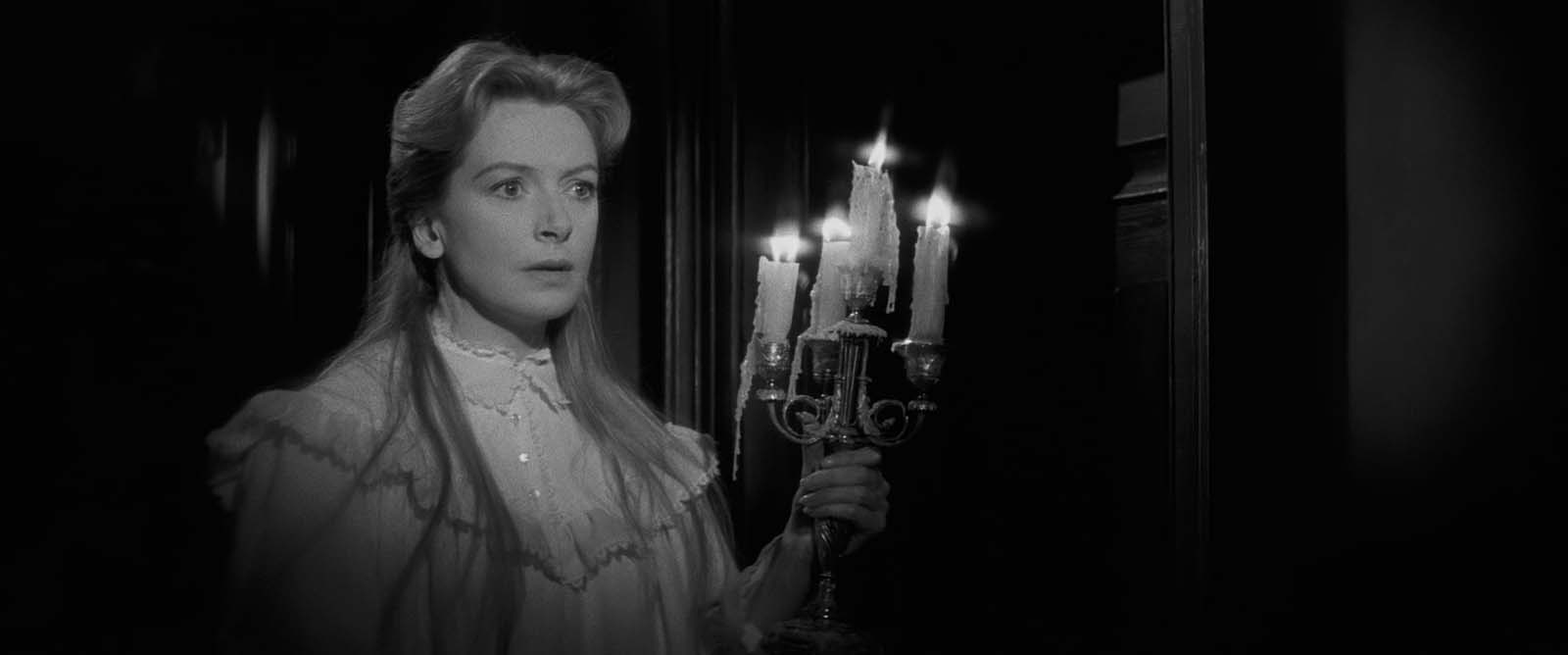THE INNOCENTS: The Harsh Light of Day
I recently watched The Innocents (1961, dir. Jack Clayton), an elegant, frightening, and psychologically rich ghost tale.

Like last year’s poignant Haunting of Bly Manor, The Innocents takes its story from Henry James’ 1898 novella The Turn of the Screw. Unlike Mike Flanagan’s typically verbose and grandiose Netflix serial, the pleasures of The Innocents are small, quiet, understated.
One scene in particular shivers my timbers:
So what makes this scare in broad daylight work?
For starters, it’s a violation of the “best seat” rule of editing, which posits that an editor should make shot choices as if the camera’s vantage point is from the “best seat in the house.” Director Jack Clayton and editor Jim Clark subvert the rule by keeping the mysterious woman in a super-wide shot. We want to get up close to examine this specter and determine if she’s a threat or not, but like our heroine Miss Giddens (Deborah Kerr, in a bravura performance as the tightly wound governess), we can’t. Even on a 4K screen, it’s hard to make out the details of the faraway, out-of-focus phantom.
This scene also works due to the sound design, ever the unsung hero of immersive cinematic moments. When young Flora (Pamela Franklin) hums a delicate tune that functions as the film’s eerie musical motif, sound designer Daphne Oram blends Flora’s vocals with sustained ghostlike tones that creep into the soundtrack like barely imperceptible wind, then build to prominence as Miss Giddens realizes she and Flora are not alone. Oram’s synthesizer-generated tones, a cutting-edge innovation at the time, highlight the unsettling surrealism of the moment without forcing it with overstated music.
One of the finest narrative accomplishments of The Innocents involves subtle tricks of perspective. The angles, editing, and sound design initially come off as the stuff of third-person objectivity, but when taken as a whole, these audiovisual choices reflect Miss Giddens’ perceptions and hers alone. This subtle yet effective sleight of hand plays upon an unsettling fact of life: just because something is our truth doesn’t mean it’s the truth.